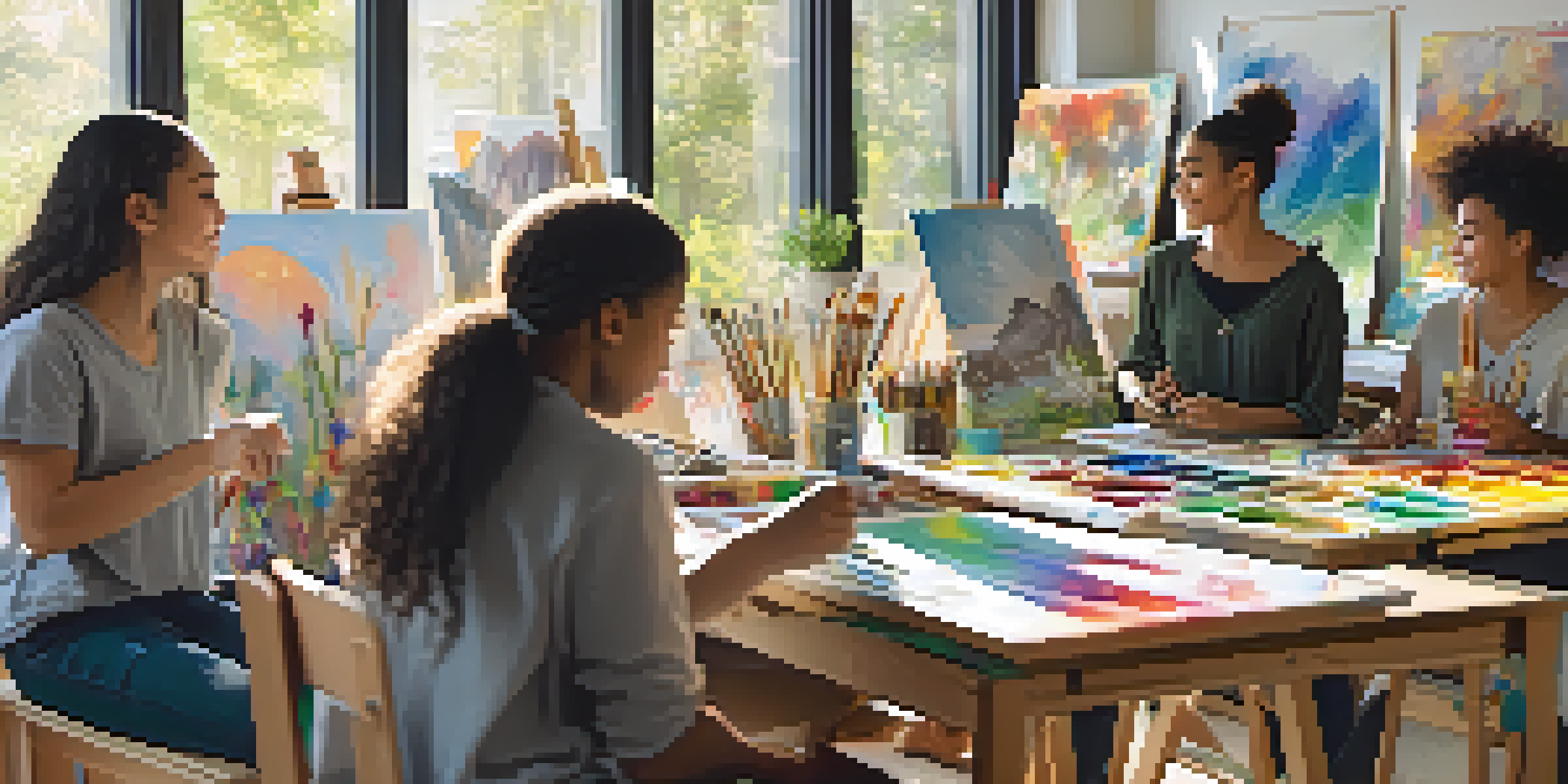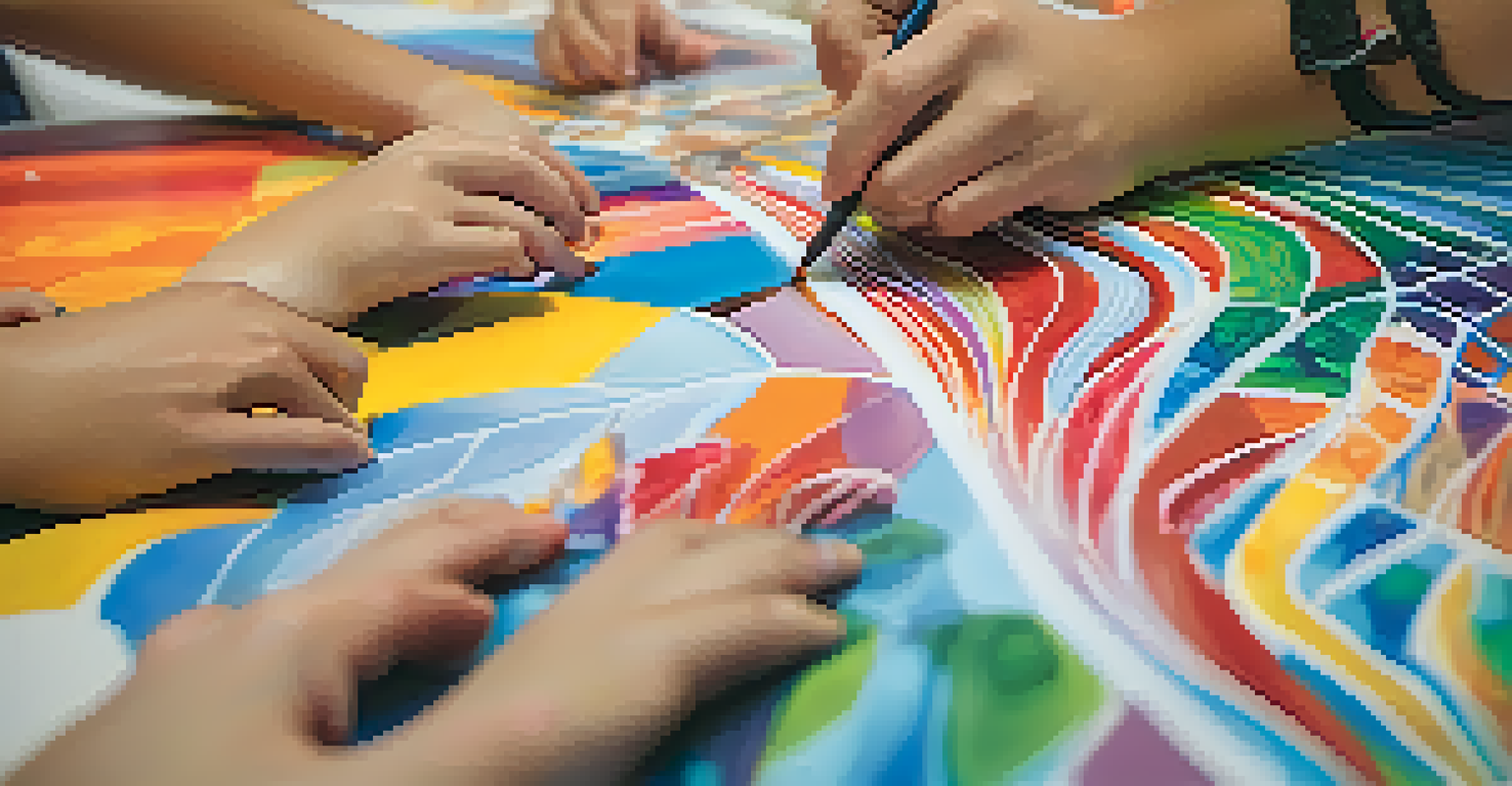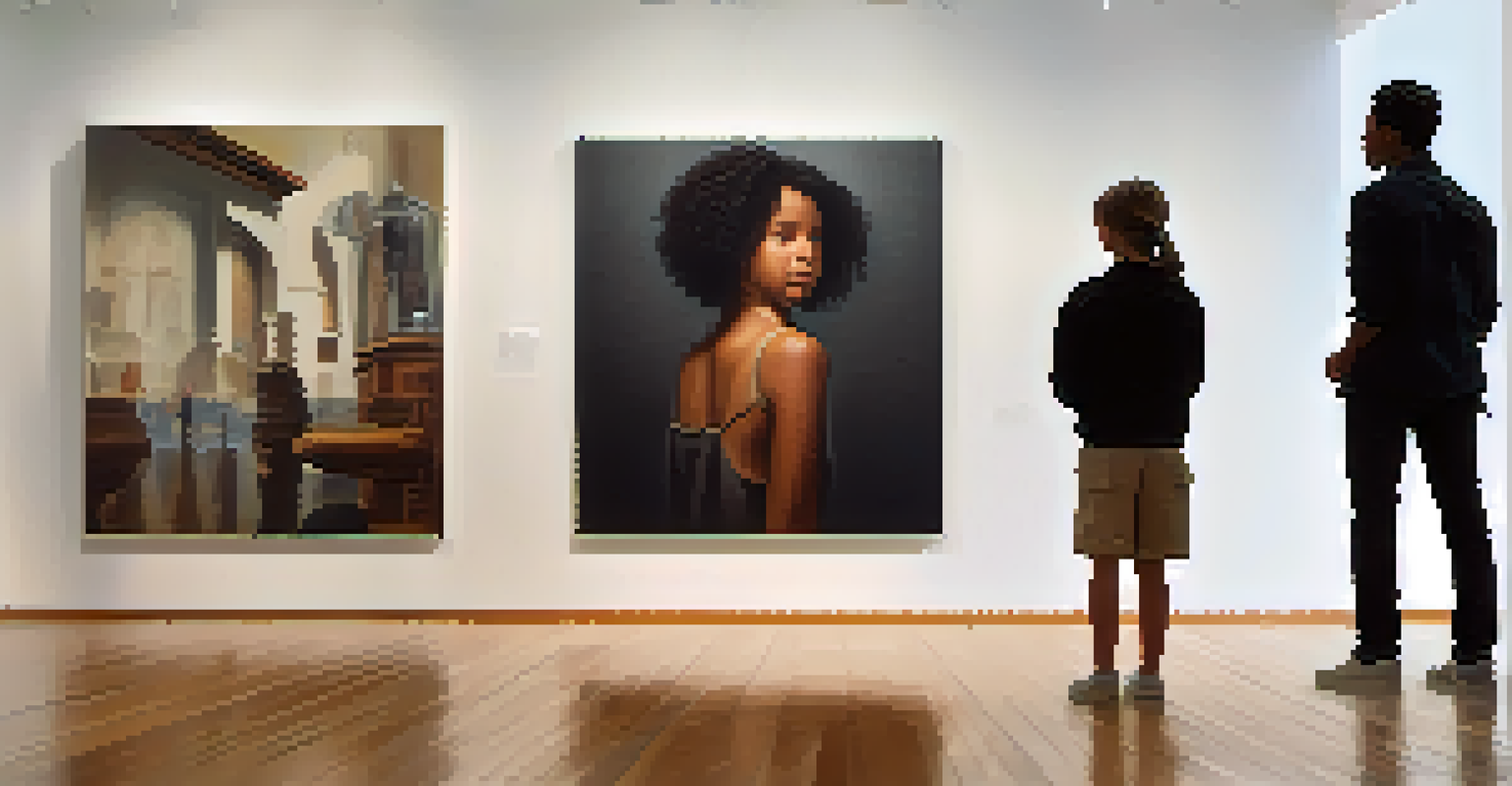Art Education: Fostering Lifelong Learning and Curiosity

Understanding the Role of Art Education
Art education is more than just painting or drawing; it's a gateway to understanding creativity. It encourages students to express themselves in unique ways, fostering not only artistic skills but also critical thinking. Through art, learners can explore different perspectives, making it an essential tool for personal and academic growth.
Every artist was first an amateur.
Moreover, art education cultivates emotional intelligence. When students engage with art, they learn to interpret feelings, both their own and those of others. This ability to empathize is crucial in today’s diverse world, allowing individuals to connect with others on a deeper level.
Ultimately, art education serves as a foundation for lifelong learning. By nurturing curiosity and encouraging exploration, it instills a passion for discovery that extends beyond the classroom walls.
Promoting Curiosity Through Artistic Exploration
Art education naturally piques curiosity, inviting students to ask questions and seek answers. When children engage with different materials and techniques, they become more inquisitive about the world around them. This hands-on exploration not only enhances their artistic skills but also encourages them to think critically about various subjects.

For instance, a project involving nature-based art can spark a child’s interest in biology or environmental science. As they observe and create, they are likely to ponder topics like ecosystems and sustainability. This interdisciplinary approach highlights how art education can weave together various fields, fostering a holistic learning experience.
Art Boosts Creativity and Confidence
Art education fosters creativity and self-confidence, empowering students to express themselves and embrace challenges.
Such experiences instill a sense of wonder that can last a lifetime. When students are encouraged to explore their interests through art, they develop habits of inquiry that benefit them well beyond their school years.
Building Confidence Through Creative Expression
One of the most significant benefits of art education is the boost in self-confidence it provides. When students create something they’re proud of, it reinforces their belief in their abilities. This newfound confidence can spill over into other areas of their lives, encouraging them to take risks and embrace challenges.
Art is not freedom from discipline, but disciplined freedom.
In addition, constructive feedback plays a crucial role in this confidence-building process. When students learn to critique their work and that of their peers, they develop a growth mindset, understanding that improvement comes with practice. This perspective empowers them to view failures as opportunities for learning rather than setbacks.
As students navigate the ups and downs of artistic creation, they develop resilience. This quality is invaluable, as it equips them to face life's challenges with a positive attitude and a willingness to persevere.
Fostering Community and Collaboration Through Art
Art education fosters a sense of community among students, creating a collaborative environment. When individuals work together on art projects, they learn the importance of teamwork and shared vision. This collaboration not only enhances their social skills but also teaches them to appreciate diverse perspectives.
For instance, group murals or theater productions require input from various individuals, leading to a richer final product. Such projects encourage students to communicate openly, compromise, and celebrate collective achievements. This sense of belonging is vital for personal development and emotional well-being.
Collaboration Builds Community
Through collaborative art projects, students learn teamwork and appreciate diverse perspectives, enhancing their social skills.
Ultimately, these collaborative experiences help students build lasting relationships. As they create art together, they forge bonds that often extend beyond the classroom, creating a supportive network that nurtures their creativity.
Connecting Art Education to Real-World Applications
Art education is not confined to the classroom; it has real-world implications that enhance career readiness. Many professions, from design to marketing, rely on creativity and innovative thinking. By cultivating these skills through art, students become more adaptable and prepared for the workforce.
For example, art students often explore concepts like branding or visual communication, which are vital in today’s digital age. They learn to convey messages effectively through visuals, a skill that is increasingly sought after in various industries. This connection shows how art can bridge the gap between education and practical applications.
Additionally, understanding the role of art in culture and society equips students to engage thoughtfully with the world around them. They gain insights into how art influences social movements and human experiences, preparing them to be informed citizens and empathetic leaders.
Enhancing Critical Thinking Skills Through Art
Art education encourages students to think critically and analytically. When they create or analyze a piece of art, they must consider elements such as composition, color, and technique. This process hones their ability to evaluate information and make informed decisions, skills that are crucial in all areas of life.
Moreover, engaging with art fosters open-mindedness. Students learn to appreciate various interpretations and meanings, developing an understanding that perspectives can differ. This awareness is vital in a world that often presents complex issues requiring thoughtful consideration.
Art Connects to Real-World Skills
Art education equips students with critical thinking and creative problem-solving skills essential for various careers.
As they grapple with the nuances of art, students also enhance their problem-solving skills. They learn to approach challenges creatively, equipping them to tackle both artistic and real-world problems with confidence and ingenuity.
The Lasting Impact of Art Education on Lifelong Learning
The influence of art education extends far beyond school years, laying the groundwork for lifelong learning. When students develop a passion for creativity, they are more likely to pursue interests in various fields throughout their lives. This continuous quest for knowledge keeps their minds active and engaged.
Furthermore, art encourages ongoing exploration and self-expression. As individuals encounter new experiences, they often turn to creative outlets, whether through painting, writing, or music. This adaptability not only enriches their lives but also promotes emotional well-being.

In essence, art education fosters a mindset of curiosity and exploration. It equips individuals with the tools needed to navigate life’s complexities, ultimately cultivating a lifelong love for learning.